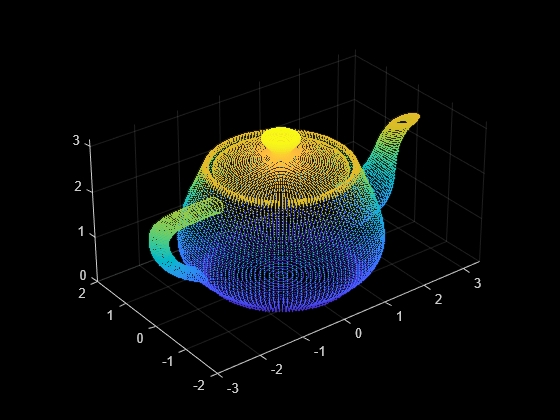pc2surfacemesh
Syntax
Description
[
creates a surface mesh from the input point cloud mesh,depth,perVertexDensity] = pc2surfacemesh(ptCloudIn,"poisson")ptCloudIn using the
Poisson reconstruction method. The function also returns the octree depth used in the
reconstruction depth and the vertex density
perVertexDensity.
[
additionally specifies the octree depth value for the Poisson reconstruction
method.mesh,depth,perVertexDensity] = pc2surfacemesh(ptCloudIn,'poisson',inputDepth)
[
additionally specifies the radii for the ball-pivot reconstruction method.mesh,radii] = pc2surfacemesh(ptCloudIn,'ball-pivot',inputRadii)
Examples
Input Arguments
Output Arguments
Algorithms
Version History
Introduced in R2022bSee Also
mesh2pc | surfaceMesh | readSurfaceMesh | writeSurfaceMesh | surfaceMeshShow



